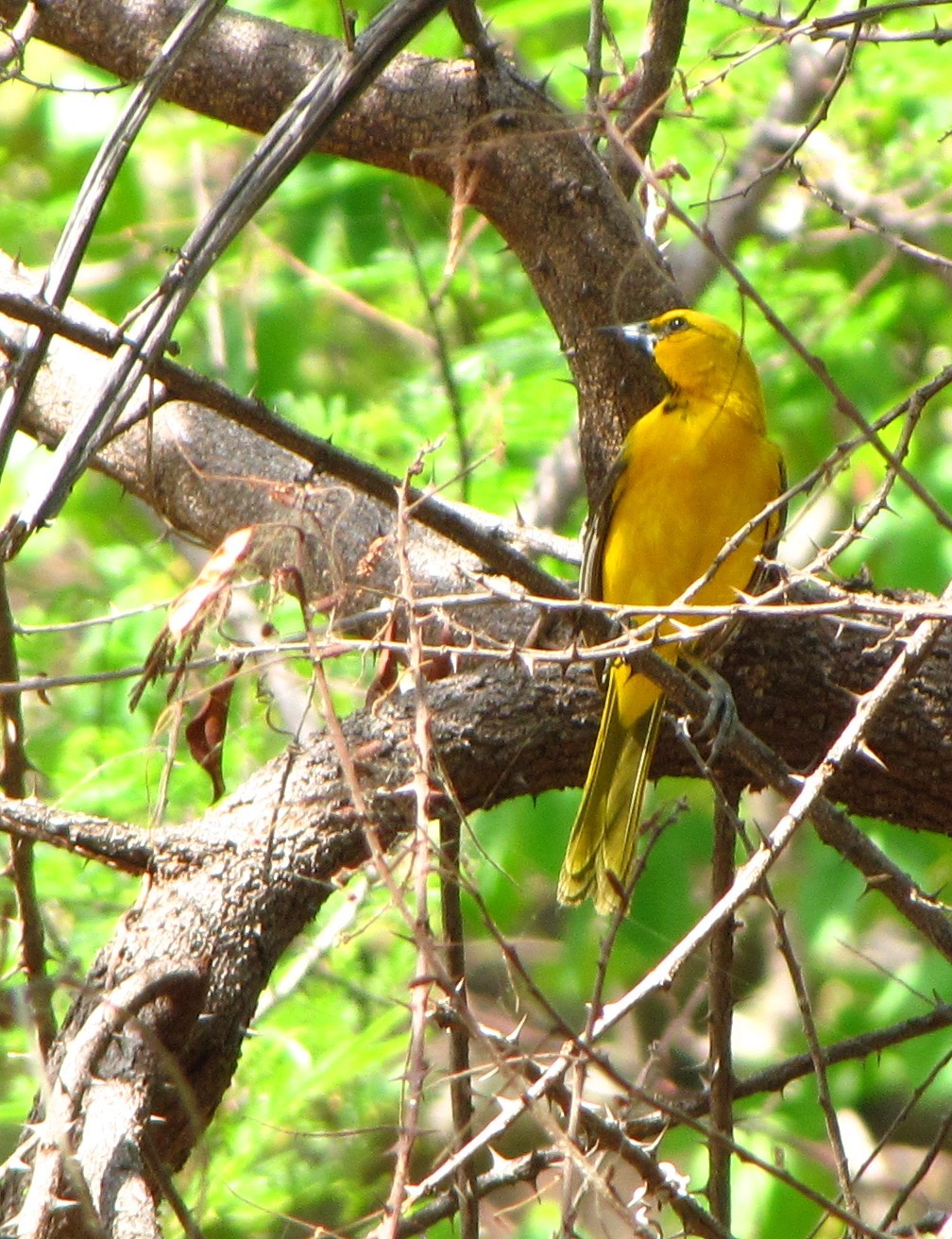Yellow Oriole
A species of New world orioles Scientific name : Icterus nigrogularis Genus : New world orioles
Yellow Oriole, A species of New world orioles
Botanical name: Icterus nigrogularis
Genus: New world orioles
Content
Description General Info
Description
The yellow oriole (Icterus nigrogularis) is a passerine bird in the family Icteridae. It should not be confused with the green oriole, sometimes alternatively called the Australasian yellow oriole, Oriolus flavocinctus, which is an Old world oriole. The yellow oriole is also called the 'plantain' and 'small corn bird', and in Venezuela it is known as 'gonzalito'. It breeds in northern South America in Colombia, Venezuela, Trinidad, the Guianas and parts of northern Brazil, (northern Roraima state, and eastern Amapá). The yellow oriole is a bird of open woodland, scrub and gardens. Its nest is a 40 cm-long hanging basket, suspended from the end of a branch. The normal clutch is three pale green or grey eggs. This is a 20–21 cm long, 38 g weight bird, with mainly yellow plumage, as its name suggests. The adult male has a black eye mask, thin black throat line, black tail and black wings with a white wing bar and some white feather edging. The female is similar but slightly duller, and the juvenile bird has an olive-tinged yellow back, and lacks black on the face. There are four subspecies of yellow oriole, of which three are restricted to islands. They differ from the widespread nominate race of the mainland in body and bill size, and minor plumage details. This species eats mainly large insects, but will also take nectar and some fruit. The song of the yellow oriole is a pleasant melodious fluting, with some buzzing. The calls include a cat-like whine, and chattering noises. 
Size
21 cm
Nest Placement
Tree
Feeding Habits
Yellow Oriole predominantly consumes a varied diet of insects like beetles, flies, caterpillars, cicadas, grasshoppers, other arthropods, spiders, as well as fruits from Barbados cherry and date palms, and nectar. Foraging behaviors include actively hunting for insects and sourcing plant-derived food.
Habitat
The yellow Oriole thrives in environments from arid to semi-arid woodlands and scrublands with cacti, mesquite, and acacia. It also resides at the edges of gallery forests and open woodlands in seasonally dry regions. Typically found in lowlands under 800 meters, it can range up to 1800 meters. The yellow Oriole is adaptable, inhabiting human-altered landscapes, including cultivated lands with trees and urban parks.
Dite type
Frugivorous
General Info
Feeding Habits
Bird food type

Fruit
Species Status
Not globally threatened.
